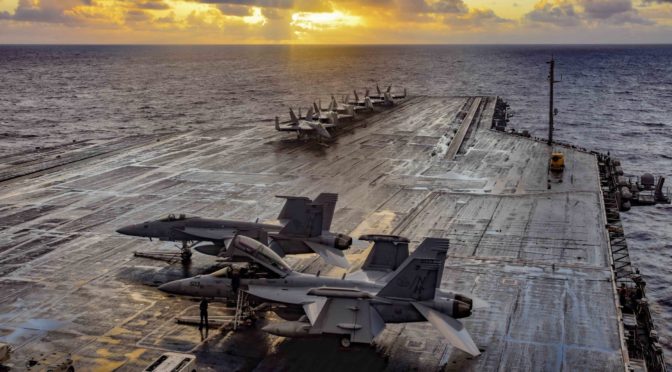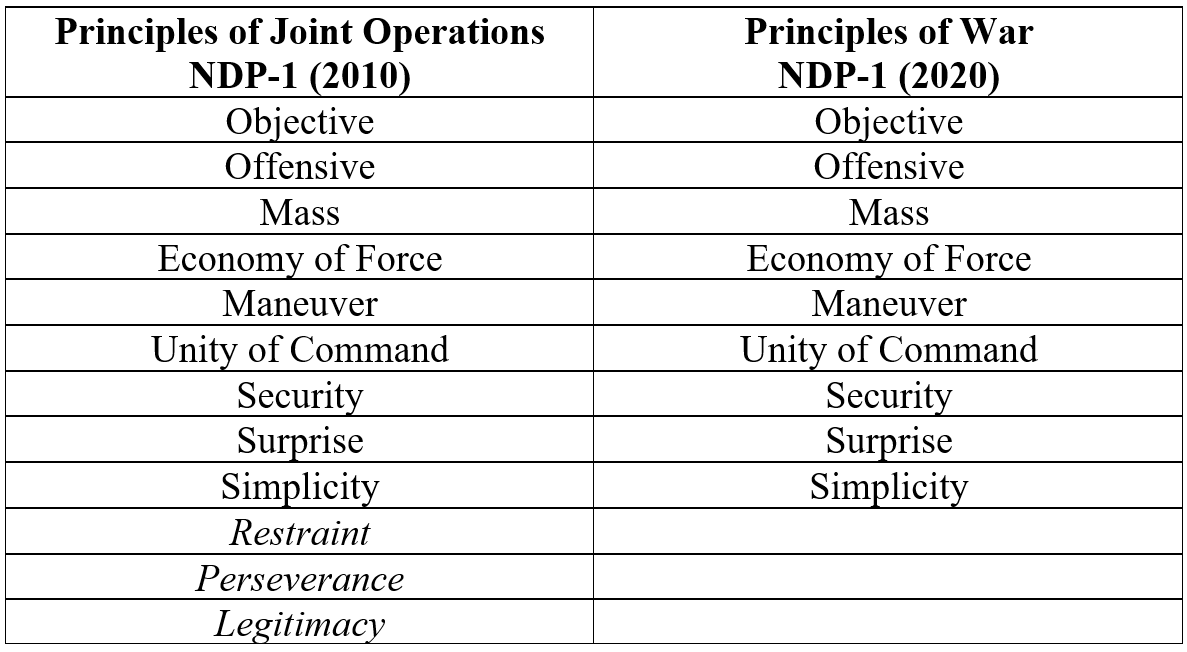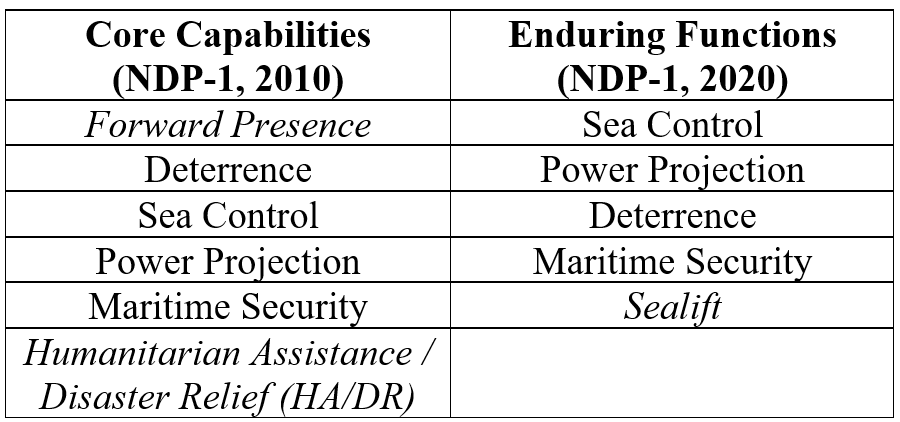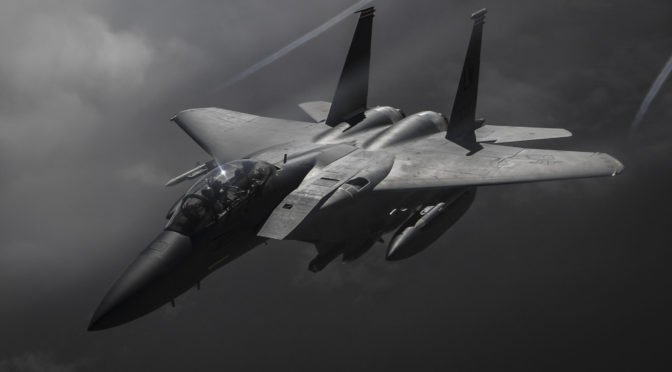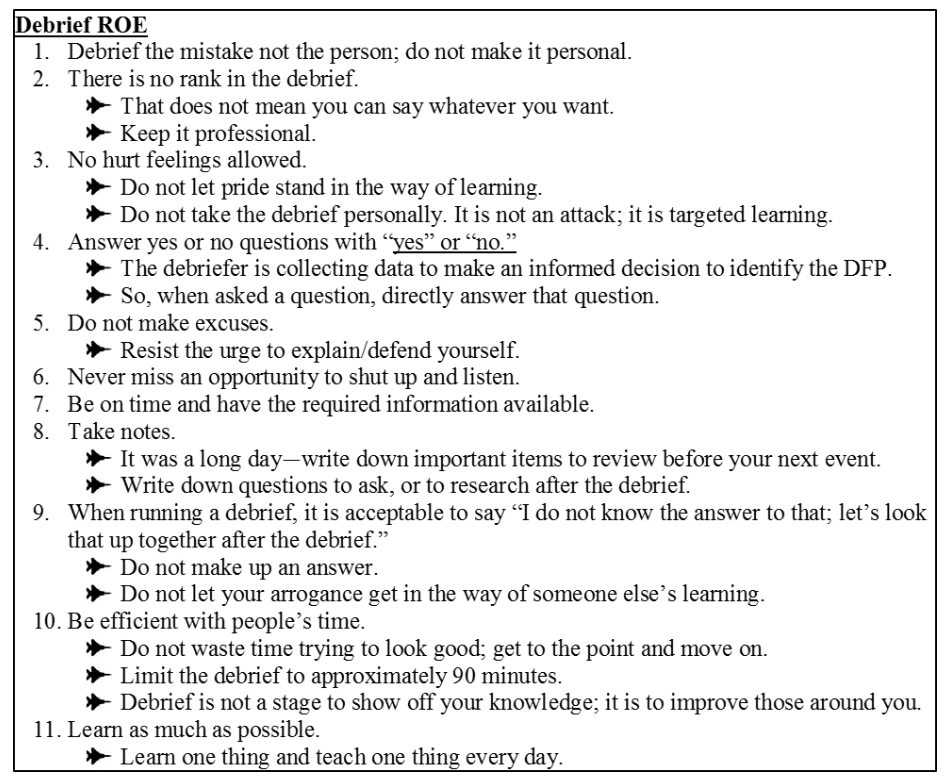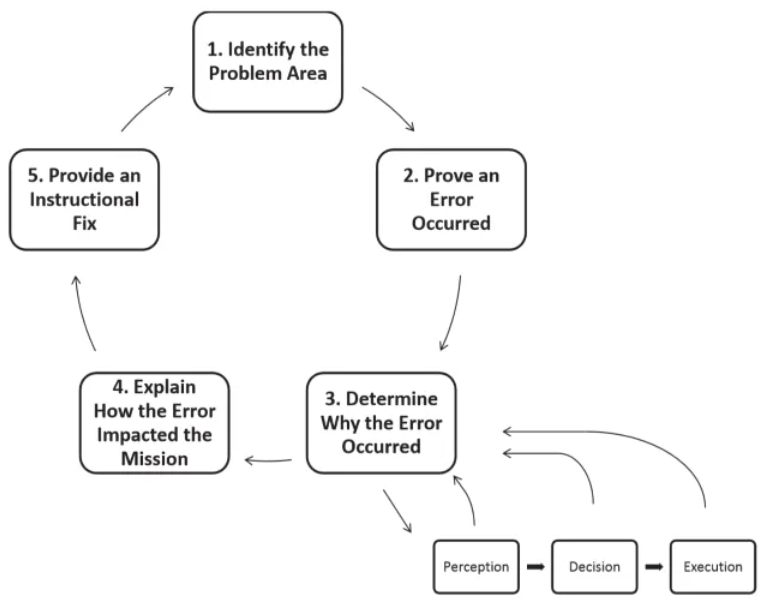By Dr. Mie Augier, Major Sean F. X. Barrett, Dr. Nick Dew, and Dr. Gail Fann Thomas
“The 21st Century demands American officers be far better educated and more capable of directing and integrating the Nation’s military instrument.” –Developing Today’s Joint Officer for Tomorrow’s Ways of War1
“The challenges of the twenty first century require holistic approaches to the changing character of conflict.” –Education for Seapower2
Introduction
The Joint Chiefs of Staff’s May 2020 vision and guidance for Professional Military Education (PME) and talent management states, “There is more to sustaining a competitive advantage than acquiring hardware; we must gain and sustain an intellectual overmatch as well.”3 Developing flexible, agile minds was also a major theme a century ago in the Knox-King-Pye report, which helped the Navy steer away from an earlier technical education focus and toward broader skills that helped produce the ideas and leaders that proved critical in WWII.
Fast forward 100 years, and we have reached another inflection point. Numerous studies point to a geostrategic environment that has shifted radically in the past decade toward a future that is filled with uncertainty. The Navy and Marine Corps have realized that key aspects of our institutions, war planning, training, education, and resource management are inadequate to deter and, if necessary, win against our adversaries when the situation arises.
We should look at how management education, with its interdisciplinary and integrative focus, is an essential tool for developing future naval warfighters who have the skills to draw out peak performance from personnel and maximize the effectiveness of a wide range of naval organizations.4 Most people know from personal experience the difference that excellent management makes to organizational performance. A recent study shows that workers who moved from an average boss to a high-quality boss improved their productivity by 50 percent.5 Leaders with high-quality management skills can really make an impact. And while the context of management varies, the practice of management across a broad range of situations fundamentally requires a similar set of core skills.6 Given the need for the Navy team to perform at its peak under challenging circumstances, the Navy would be well-served by incorporating more management education into PME for both officers and enlisted sailors.
The Human Element in High-Performance Organizations
Our naval forces do not operate in a vacuum and are oftentimes nudged by larger economic and societal trends. Therefore, it is worth looking briefly at some general trends in U.S. management before turning to what specifically might be relevant to defense management.
Industries throughout the U.S. have been grappling with issues similar to those facing the naval services. Technology is changing faster and faster. Attracting, engaging, and retaining top talent is an unrelenting task. In response to these challenges, corporations have recognized the need to create learning organizations that support high performance. Evidence of these issues in the Navy is apparent in recently retired Vice Admiral Luke McCollum’s 2018 report in response to the 2017 U.S. Navy ship collisions. The report, Industry Best Practices & Learning Culture – The Competitive Advantage of a Learning Culture, provided a series of findings after surveying 30 Navy-relevant corporations to learn how they build and sustain high-performing organizations. Human factors topped the list.
The most important component of building a learning culture is inculcating these “human factors” into the organization. High-performance and mission effectiveness are dependent on the humanistic aspects of employees, teams, and leaders. This people-centric perspective dominates high-performing organizations.7
This human-oriented theme has long been recognized by our naval leaders. Admiral Arleigh Burke clearly understood the importance of developing the Navy’s leaders:
“There is one element in the profession of arms that transcends all others in importance; this is the human element. No matter what the weapons of the future may be, no matter how they are to be employed in war or international diplomacy, man will still be the most important factor in naval operations.”8
More recently, the Joint Chiefs emphasized the human factor in their May 2020 report:
“All graduates must possess critical and creative thinking skills, emotional intelligence, and effective written, verbal and visual communication skills to support the development and implementation of strategies and complex operations.”9
Given the centrality of the human element to our naval success, we must understand how to manage it well. This involves a shift in the kinds of skills, capabilities, attitudes, and values at the center of PME. Two central issues stand out.
An increasing need for generalist skills in an uncertain world. In his book, Range, David Epstein claims that cognitive flexibility is increasingly important in today’s world. Training in specific tools and techniques is efficient for mastering repetitive, well-structured problems. However, a world full of uncertainty, ambiguity, and ill-structured problems requires more diverse skills and knowledge (i.e., range and flexibility). Cognitive flexibility manifests in the ability to transfer knowledge between domains and apply knowledge to new situations, which is increasingly important in today’s specialized world. Teaching broad concepts rather than specific information is more advantageous to developing this ability, as well as instilling a broad intellectual preparedness and the ability for ongoing learning. Warfighters need to learn how to think rather than what to think about. As the Nobel Laureate Herbert Simon cautioned, “What we must avoid above all is designing technologically sophisticated hammers and then wandering around to find nails that we can hit with them.”10 An ability to think abstractly can be capitalized on across a range of problems as opposed to specific skills that are limited to particular types of problems. Thus, instruction focused on helping students make connections is more conducive to learning and later achievement than focusing on formulas and procedures.11 Such skills are very relevant to warfighters where there is a high need for flexibility and taking initiative in executing operational orders.
An explicit focus on soft skills. Operating effectively in a world in which technology has connected individuals and organizations more than ever requires warfighters with sophisticated soft skills in addition to technological expertise. The President of the Naval Postgraduate School, Vice Admiral Ann E. Rondeau, USN (ret.), explains, “Employers today require the whole package when looking for people to hire and join their teams… They want individuals who have developed intangible skills not necessarily listed as part of a certificate or degree.”12 Today’s reality requires warfighters to have the soft skills necessary to manage organizational ecosystems where leaders do not necessarily wield formal authority but instead must build mutually aligned communities. As Richard Straub writes in the June 2019 Harvard Business Review, “To succeed in the era of platforms and partnerships, managers will need to change practice on many levels…Both practitioners and scholars can begin by dispensing with mechanistic, industrial-age models of inputs, processes, and outputs. They will have to take a more dynamic, organic, and evolutionary view of how organizations’ capacities grow and can be cultivated.”13 Soft skills have thus emerged as a key requirement for managing the performance of ecosystems of organizations.”14
By identifying the Navy’s requirements for high-quality management skills among its warfighters, we can invest in PME that equips naval warfighters with the skills they really need to lead a wide range of naval organizations to high performance.
Management Education for Seapower
Given the need for superior generalist and soft skills to match the challenges of the strategic environment the Navy faces, management education provides many key opportunities for warfighters to develop the right intellectual abilities. Some of the most relevant themes and approaches include the following:
Educating minds to be prepared for the unexpected. Retired Admiral Mike Mullen, who spoke at the Naval Postgraduate School’s first virtual SECNAV Guest Lecture, stated, “We live now in a tremendous time of great uncertainty and even greater ambiguity. We’re facing and will face a completely new, and in many ways unknown, reality where nothing will be the same in the future.”15 Management approaches and education can help in this instance. Management education is centrally concerned with anticipating and adapting to change. It develops proactive problem-solving skills. While the ability to analyze known problems using optimizing techniques has a place, it is important for the Navy also to focus on developing warfighters with skills in thinking through ambiguous and changing situations.16
Leading warfighting organizations to become more agile through change and transformation. In their May 2020 report, the Joint Chiefs observed, “We cannot simply rely upon mass or the best technology…Our job is to learn how to apply our capabilities better and more creatively.”17 Admiral Mullen similarly emphasized the importance of leading change.18 However, change is not easy. For example, former Secretary of Defense Robert Gates noted in his memoir, Duty, that the greatest challenge he faced was changing organizations. Any change, to be effective, must be understood and communicated by people to be implemented in our organizations. In the DoD, this becomes even more complicated because it involves government civilians, military personnel, and contractors, and requires leading across generational divides and a diverse workforce. Given these complexities, warfighters need to use evidence-based approaches on how to best lead change.19
Excelling in communication skills. An intelligent workforce knows how to communicate clearly. Kline’s “Owl Speaks to Lion” humorously describes the detrimental results when an analyst does not know how to translate his findings adequately for the vice admiral who requires the results to make an important decision. Such skills are taught and honed over time and experience. One critical communication skill that must be fostered is writing. The writing process hones one’s thinking and helps one discover the real problem, define the root causes of the problem, and describe the costs and benefits of various courses of action.20
Building exemplary people skills. As the Department of the Navy’s Education for Seapower report explains, “[N]aval leaders must be just as ready to…solve a social problem below decks or in the platoon” as they are “to move against the enemy.”21 Research shows that emotional intelligence, coaching, and feedback upward, downward, and horizontally are key to high performing organizations. And these skills are not “one and done.” Each level of leadership presents new challenges concerning the types and complexity of the problems encountered and the number of people one leads. Social skills are developmental and change over the life of the leader. Additionally, there is evidence that leaders’ skills are directly related to retention. Most have heard the adage, “Employees don’t leave their organization; they leave their managers.”22 Good bosses not only contribute to the high performance of their employees but also increase employee retention because workers quit bad bosses.23
Understanding the influence of cultures. Complementary to (but different from) traditional international relations approaches, management and leadership education emphasize understanding how culture influences decision-making and how it affects collaboration. This is increasingly important to warfighters in an era featuring more and more “shared responsibility for security with other nations,” wherein “[s]trong global relationships and defense partnerships help mitigate the risks of…unpredictability.”24 Greater mutual understanding and mutual trust has enormous practical value in operational environments.
Developing meaningful organizational leadership skills. Vice Admiral Rondeau notes the essential connection between leaders and their organizations: “Leaders set the tone for the culture of their organizations. Meaning of the community, no matter how defined, becomes essential for interconnectedness, for bonding, and for understanding. It all has to do with the relationship between the organization and the individual.”25 The Navy’s PME institutions are uniquely positioned to develop warfighter skills in how to communicate and build essential interconnections using best practices from both civilian and military approaches to leadership development.
Building historical understanding to be decisive in the future. In an operational environment featuring a lack of combat deployments, we must increasingly turn to history to learn vicariously through others. The first President of Marine Corps University, Lieutenant General Paul K. Van Riper, USMC (ret.), reflected, “I wanted to impart a simple lesson: a properly schooled officer never arrives on a battlefield for the first time, even if he has never actually trod the ground, if that officer has read wisely to acquire the wisdom of those who have experienced war in times past.”26 A champion of PME throughout his career in Congress, Representative Ike Skelton also recognized the importance of an appreciation for history: “I cannot stress this enough because a solid foundation in history gives perspective to the problems of the present. And a solid appreciation of history…will prepare students for the future.”27 Management education has long championed these kinds of vicarious learning through the extensive use of case studies. The case study approach heightens students’ sensitivity to history, context, and the particulars of a wide variety of situations. It gives warfighters a reservoir of examples to draw on as they face an unpredictable future.28
These elements of management education can help naval warfighters improve their personal performance and create a higher-performing Navy team that is better positioned to cope with the unpredictability of the future operating environment. In an era when investment dollars are at a premium, these management skills should be emphasized to a greater extent in PME because they provide high return on the Navy’s investments. Management skills can be applied across a wide range of situations and roles, and they typically stay relevant longer than technical skills. Management skills are particularly valuable for warfighters that advance into higher-level positions that usually involve more complex organizational and leadership challenges, and less technical know-how.29 A recent study by Harvard economists David Deming and Kadeem Noray puts it this way:
“[High]-ability workers choose STEM careers initially, but exit them over time…[This] is explained by differences across fields in the relative return to on-the-job learning. High ability workers are faster learners in all jobs. However, the relative return to ability is higher in careers that change less because learning gains accumulate”(emphasis added).30
Return on investment explains why management degrees (principally MBAs) dominate lists of the most popular graduate degrees, since individuals know that as their careers advance, the returns on graduate education favor developing strong management skills.31 Investing in management know-how is also less risky than investing in technical knowledge because the general applicability of management skills means they never abruptly go out of fashion.
Conclusion
“Whoever can make and implement his decisions consistently faster gains a tremendous, often decisive advantage. Decision making thus becomes a time-competitive process, and timeliness of decisions becomes essential to generating tempo. Timely decisions demand rapid thinking, with consideration limited to essential factors. We should spare no effort to accelerate our decision-making ability.” –FMFM 132
The changing geostrategic landscape demands changes in the skillsets of our naval leaders. Because of rapid advancements in technology, the human element will play an increasingly important factor in future operating environments. While tactical naval warfighters need to be technically savvy, operational-level warfighters must excel in the managerial skills needed to get peak performance out of the human element. Fundamentally, this is a general management challenge that applies across a wide range of Navy organizations. The Education for Seapower study and strategy, and the remarks of our naval leaders highlight that this entails a paradigm shift in our approach to PME. The Navy should invest more in management education to develop the intellectual and practical competencies required for excellence in naval warfighting.
Dr. Mie Augier is a professor in the Graduate School of Defense Management at the Naval Postgraduate School and a Founding Member of the Naval Warfare Studies Institute (NWSI). She is interested in strategy, organizations, innovation, leadership, and how to educate strategic and innovative thinkers.
Major Sean F. X. Barrett is an active duty Marine Corps intelligence officer. He is currently the operations officer for the Headquarters Marine Corps Directorate of Analytics & Performance Optimization.
Dr. Nick Dew is a professor at the Graduate School of Defense Management at the Naval Postgraduate School. His research is focused on entrepreneurial thinking and innovation in defense organizations.
Dr. Gail Fann Thomas is an associate professor in the Graduate School of Defense Management at the Naval Postgraduate School. Her research focus is strategic communication and interorganizational collaboration.
References
1. Joint Chiefs of Staff, Developing Today’s Joint Officers for Tomorrow’s Ways of War: The Joint Chiefs of Staff Vision and Guidance for Professional Military Education & Talent Management, (Washington, DC: 2020), 2.
2. Department of the Navy, Education for Seapower (Washington, DC: 2019), 37.
3. Joint Chiefs of Staff, Developing Today’s Joint Officers, 2.
4. We acknowledge the difference between management and leadership. Both can be learned and contribute to peak performance for naval officers. See, for example, Bernard Bass, The Bass Handbook of Leadership: Theory, Research, and Managerial Applications (New York: Simon and Schuster, 2010); John Kotter, “What Leaders Really Do,” Harvard Business Review (Dec. 2001): 2; Abraham Zaleznik, “Managers and Leaders: Are They Different?” Harvard Business Review (Jan. 2004): 1.
5. Kathryn L. Shaw, Bosses Matter: The Effects of Managers on Workers’ Performance: What Evidence Exists on Whether Bad Bosses Damage Workers’ Performance, Issue 456 (Bonn, Germany: IZA World of Labor, 2019).
6. Shaw, Bosses Matter.
7. Luke M. McCollum, Chief of Naval Reserve, Report on Engagement With Industry and the Competitive Advantage of Learning Culture, submitted to Secretary of the Navy, December 26, 2018.
8. As quoted in Rear Admiral P. Gardner Howe III, “Professionalism, Leader Development Key to Future,” Navy News Service, May 26, 2015, https://www.navy.mil/submit/display.asp?story_id=87319.
9. Joint Chiefs of Staff, Developing Today’s Joint Officers, 4.
10. Herbert A. Simon, “What We Know About Learning,” Journal of Engineering Education 87, no. 4 (Oct. 1998): 346.
11. David Epstein, Range: Why Generalists Triumph in a Specialized World (New York: Riverhead Books, 2019).
12. Anne Rondeau, “Gen Eds – Are They Worth It?” HuffPost, March 29, 2017, https://www.huffpost.com/entry/gen-eds-are-they-worth-it_b_58dbc980e4b0f087a3041ea4.
13. Richard Straub, “What Management Needs to Become in an Era of Ecosystems,” Harvard Business Review, June 5, 2019, https://hbr.org/2019/06/what-management-needs-to-become-in-an-era-of-ecosystems.
14. Such soft skills include communication, teamwork and interpersonal skills, critical thinking, and problem-solving capability in complex, multidisciplinary situations. Casciaro, Edmondson, and Jang note that “the vast majority of innovation and business development opportunities lie in the interfaces between functions, offices, or organizations.” Similarly, Hagel and Brown observe the “productive friction” that results from transactions between companies. Strong interpersonal skills are needed for these results to manifest themselves. See Tiziana Casciaro, Amy C. Edmondson, and Sujin Jang, “Cross-Silo Leadership: How to Create More Value by Connecting Experts from Inside and Outside the Organization,” Harvard Business Review (May-June 2019): 132; John Hagel III and John Seely Brown, “Difficult Business Partnerships Can Accelerate Innovation,” Harvard Business Review (Feb. 2005), https://hbr.org/2005/02/productive-friction-how-difficult-business-partnerships-can-accelerate-innovation.
15. Admiral Mike Mullen, USN(ret.), “SECNAV Guest Lecture” (lecture, Naval Postgraduate School, Monterey, CA, May 19, 2020).
16. In the context of business, Jeff Bezos notes, “For every leader in the company, not just for me, there are decisions that can be made by analysis…These are the best kinds of decisions! They’re fact-based decisions. The great thing about fact-based decisions is that they overrule the hierarchy. The most junior person in the company can win an argument with the most senior person with a fact-based decision. Unfortunately, there’s this whole other set of decisions that you can’t ultimately boil down to a math problem.” As quoted in Bernard Girard, The Google Way: how One Company Is Revolutionizing Management As We Know It (San Francisco, CA: No Starch Press, Inc., 2009), 118.
17. Joint Chiefs of Staff, Developing Today’s Joint Officers, 3.
18. Michael Mullen, “Admiral Michael Mullen: Wharton Leadership Lecture,” October 27, 2008, https://www.youtube.com/watch?v=OD7AfDQhZbw.
19. Jeroen Stouten, Denise M. Rousseau, and David De Cremer, “Successful Organizational Change: Integrating the Management Practices and Scholarly Literatures,” Academy of Management Annals 12, no. 2 (2018): 752-788.
20. Carol Bekenkotter, “Writing and Problem Solving,” in Language Connections: Writing and Reading Across the Curriculum, eds. T. Fulwiler and A. Young (Urbana, IL: National Council of Teachers of English, 1982), 33-44.
21. Education for Seapower, 15.
22. Lori Goler, Janelle Gale, Brynn Harrington, and Adam Grant, “Why People Really Quit Their Jobs,” Harvard Business Review, January 11, 2018, https://hbr.org/2018/01/why-people-really-quit-their-jobs.
23. Shaw, Bosses Matter.
24. Acting Secretary of the Navy Thomas B. Modly, “SECNAV VECTOR 8,” January 24, 2020.
25. Ann E. Rondeau, “Identity in the Profession of Arms,” Joint Force Quarterly, no. 62 (3rd Quarter 2011): 11.
26. Paul K. Van Riper, “The Relevance of History to the Military Profession: An American Marine’s View,” in The Past As Prologue: The Importance of History to the Military Profession, eds. Williamson Murray and Richard Hart Sinnreich (New York: Cambridge University Press, 2006), 53.
27. Ike Skelton, “JPME: Are We There Yet?” Military Review 72, no. 5 (May 1992): 2-9.
28. This is complementary to a pure war college perspective in that it blends history with organizations and a strategic lens and is thus more broadly applicable and provides greater understanding for students who can learn from the process of developing and applying analogies to different contexts.
29. See, for example, a survey of Massachusetts Institute of Technology alumni, in National Academies of Sciences, Engineering, and Medicine, The Integration of the Humanities and Arts with Sciences, Engineering, and Medicine in Higher Education: Branches from the Same Tree (Washington, DC: The National Academies Press, 2018), 44-45.
30. David J. Deming and Kadeem Noray, “STEM Careers and the Changing Skill Requirements of Work,” Working Paper (June 2019), 3, https://scholar.harvard.edu/files/ddeming/files/dn_stem_june2019.pdf.
31. For example, see “Most Popular Graduate Degrees,” Master’s Programs Guide, accessed May 26, 2020, https://www.mastersprogramsguide.com/rankings/popular-masters-degrees/.
32. U.S. Marine Corps, FMFM 1: Warfighting (Washington, DC: 1989), 69.
Featured Image: Facilities of the U.S. Naval War College (U.S. Navy Photo by Jaima Fogg/Released)


